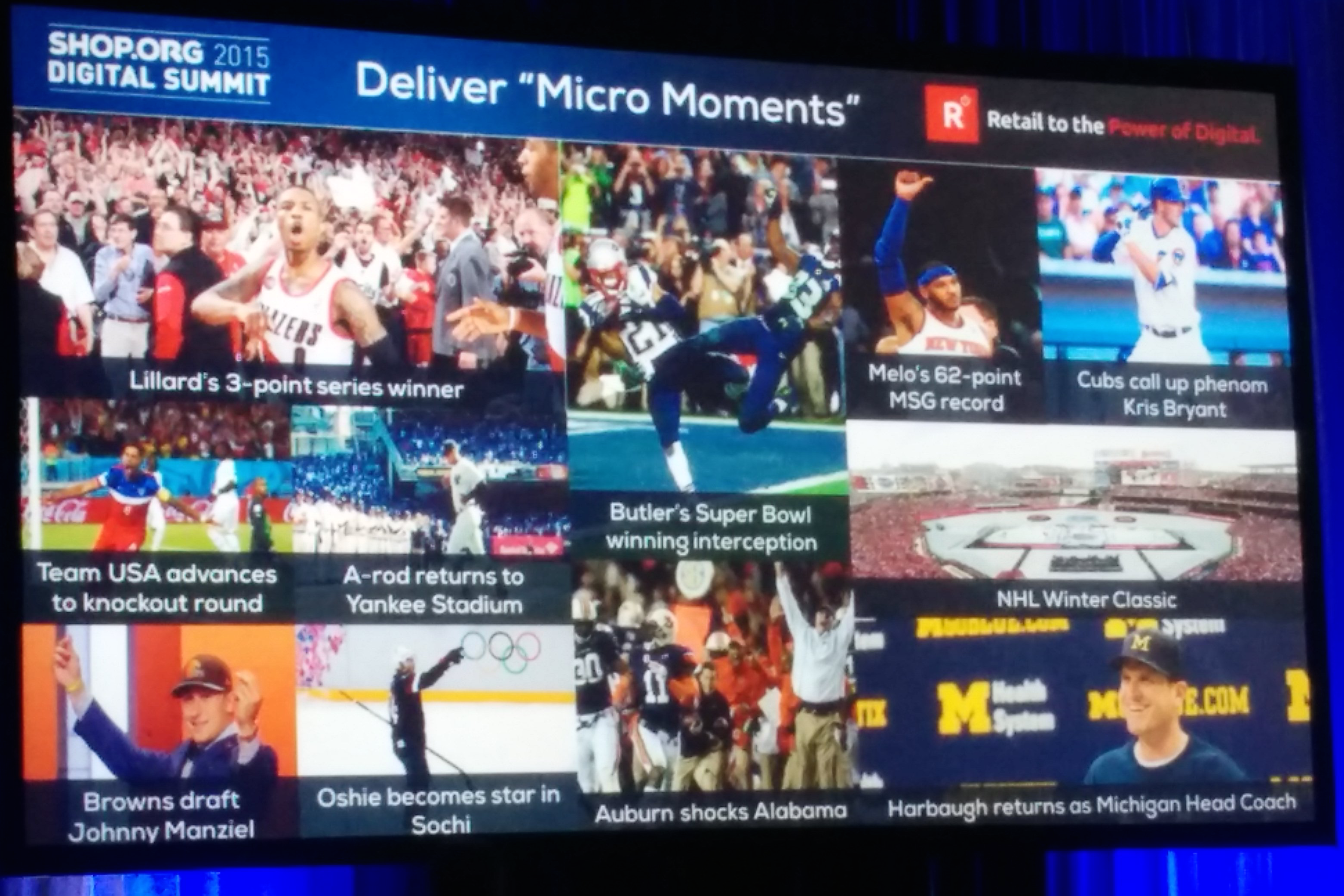The Shop.org Digital Summit in Philadelphia just wrapped up, and it’s becoming one of my favorite events to attend. Why? First, it's short and sweet. I love the two-day format! It brings everyone together in a condensed program and then lets the people carry the momentum, learning and energy from the conference back to their companies right away.
Second, it’s full of great content. The National Retail Federation (NRF) does a great job of finding fresh insights and ideas on perennial topics. This year in particular, many of the speakers shared real breakthroughs. They’re turning visions into practical realities through new, innovative solutions.
Here are just a few of the key takeaways and lessons I learned while attending the event this year:
The Product Grid is Passe
Consumers want to easily locate the information they need to make buying decisions. However, creating engaging and branded content — especially shoppable content — remains difficult for marketing and e-commerce teams.
Richard Chapman, senior content development manager at Lowe’s, stressed that retailers need to start with a definitive content strategy. They need to avoid the “sea of sameness” and, in this vein, shouldn’t rely on vendors for great content. The more engaging your content — think multiple images, 360-degree spin views, etc. — the better! Tell a story to enable consumers to relate better to products.
User-generated content (UGC) was also a hot topic. Why not capitalize on those brand evangelists? Meghan Litchfield, head of global e-commerce at GoPro, described how it uses UGC and to feed its content engine. Litchfield also echoed Chapman's comments by calling for retailers to move away from the grid to truly “win with content.”
It’s clear the most innovative retailers are moving away from shopping the grid and providing consumers with the ability to shop via rich media. GoPro is clearly a leader in this space.
Both Litchfield and Chapman encouraged the audience, regardless of their company's size, to invest in a rich content product strategy to improve consumer engagement and ultimately drive sales growth. It was clear that both speakers believed that consistent approaches to generating new content on a regular basis would inspire consumers and ultimately translate to revenues.
Feed the Content BEAST
One of my favorite talks at Shop.org this year came from Mike George, president and CEO of QVC, sharing strategies for feeding the content beast. As an $8 billion retailer that changes inventory daily, QVC's content strategy needs to be particularly adaptive and dynamic. The retailer thinks mobile first and connects with consumers across devices to influence buying decisions wherever they may be. George highlighted the importance of connecting with consumers across all device types — e.g., show recipes on one device while selling cookware on another.
Like GoPro, QVC prioritizes how content needs to inspire and surprise consumers to result in the impulse to buy. Page load times are key for conversion and bounce rates. George suggested that retailers think of web page loading like a film-strip instead of a magazine. Not everything has to load at once, but what loads first must be fast.
Key takeaway? Consistently branded, regularly created content that inspires and engages will ultimately translate to revenue.
Magic Moments Translate to Omnichannel Sales
Fanatics CEO Doug Mack spoke about the power of split-second merchandising and how brands can take advantage of current events. Sports fans want to feel like they’re a part of the action. They flock to social media to celebrate, cry and rant. Agile companies that take advantage of events in real time with relevant, engaging mobile content see a spike in sales across all channels.
Engaging digital “micro-moments” translate to sales both online and in-store. Just think about how many jerseys must have been sold after Malcolm Butler’s epic Super Bowl interception last year.
However, an online engagement strategy, particularly with social media, has to be done right. There’s a balance between putting your brand out there and inserting your brand where it doesn’t belong. We’re no strangers to brand “social media fails” and the potentially vicious feedback companies can incur. It’s critical to regularly evaluate whether your online content strategy is helping or hurting sales.
Attention Spans Are Getting Shorter
One overarching message from the conference is that attention spans are getting shorter. A great customer experience stands out, but it also takes the speed of content delivery into account. There’s a balance between quantity and quality, speed and functionality. In many cases, you only get two seconds before people start abandoning your site. Our attention spans are now officially less than that of a goldfish.
An Energizing Conference for Retailers in 2016
It’s so important to attend these industry conferences to keep up on retailing best practices and new techniques for customer engagement. We were happy to see so many innovative retailers displaying new techniques for customer engagement and sharing their knowledge.
2015 has been a big year for e-commerce and digital marketing, and I’m sure 2016 will be no different. We’re energized for the upcoming holiday season and looking forward to next year’s Shop.org Digital Summit. See you next year in Dallas for some BBQ!
Beth Moriarty is the senior vice president of products and business development at Zmags, a content marketing technology provider.










